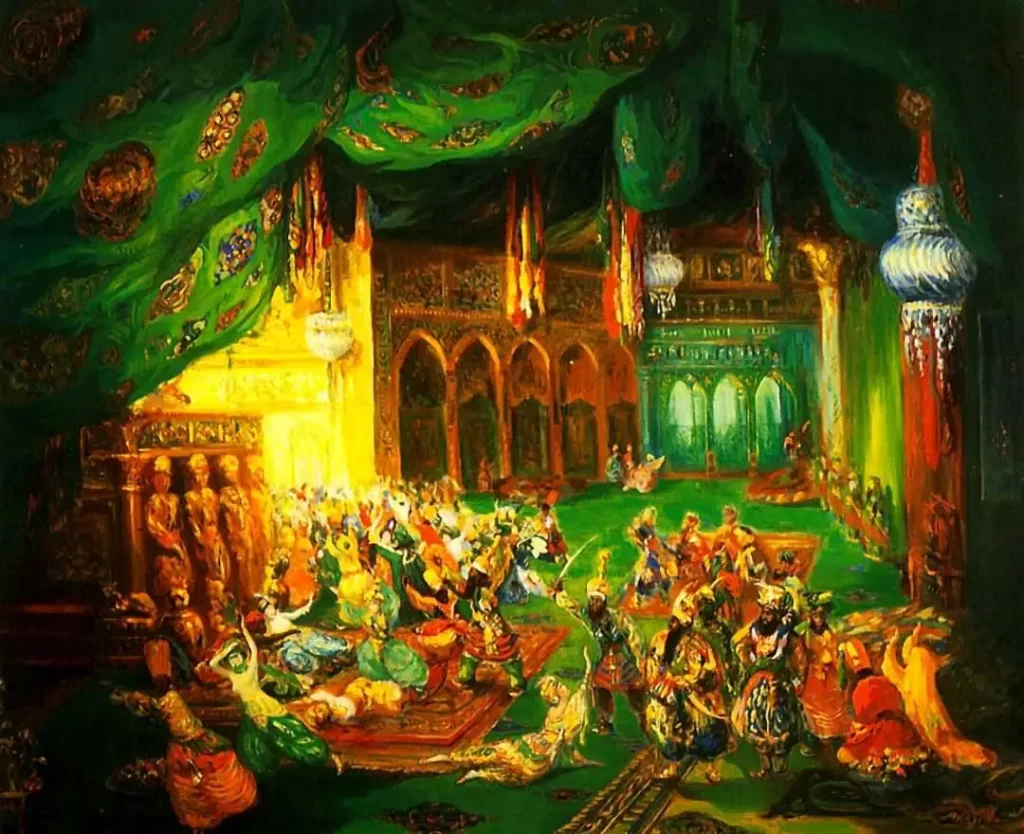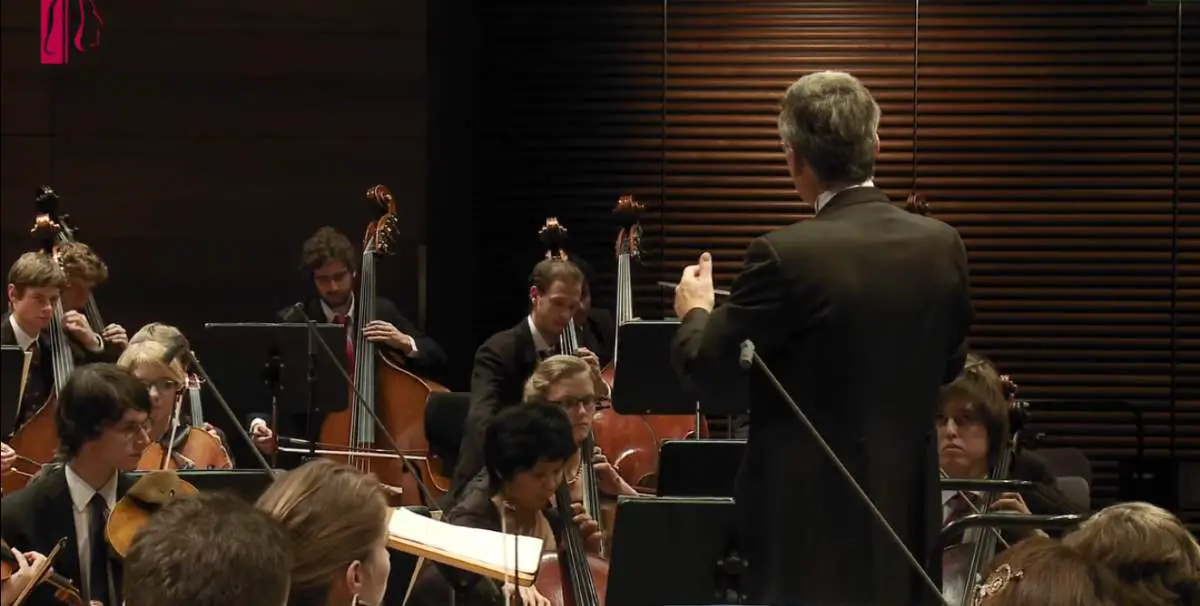Conducted by Valery Gergiev, one of the finest orchestras in the world, the Wiener Philharmoniker (Vienna Philharmonic Orchestra) plays Nikolai Rimsky-Korsakov‘s Scheherazade, Op. 35, a symphonic suite composed in 1888. Recorded during the Salzburg Festival in 2005.
Rimsky-Korsakov’s Scheherazade
Nikolai Andreyevich Rimsky-Korsakov was a master of orchestration. Based on One Thousand and One Nights (a collection of West and South Asian stories and folk tales compiled in Arabic during the Islamic Golden Age, it is often known in English as the Arabian Nights), Scheherazade is one of his best-known orchestral compositions.

The composer wrote a brief introduction that he intended to use with the score as well as the program for the premiere:
“The Sultan Schariar convinced that all women are false and faithless, vowed to put to death each of his wives after the first nuptial night. But the Sultana Scheherazade saved her life by entertaining her lord with fascinating tales, told seriatim, for a thousand and one nights. The Sultan, consumed with curiosity, postponed from day to day the execution of his wife, and finally repudiated his bloody vow entirely.”
“The unison phrase, as though depicting Scheherazade’s stern spouse, at the beginning of the suite appears as a datum, in the Kalendar’s Narrative, where there cannot, however, be any mention of Sultan Shahriar. In this manner, developing quite freely the musical data taken as a basis of composition, I had to view the creation of an orchestral suite in four movements, closely knit by the community of its themes and motives, yet presenting, as it were, a kaleidoscope of fairy-tale images and designs of Oriental character.”
Movements
1. The Sea and Sinbad’s Ship (Largo e maestoso – Lento – Allegro non troppo – Tranquillo)
This movement is composed of various melodies and contains a general A B C A1 B C1 form. Although each section is highly distinctive, aspects of melodic figures carry through and unite them into a movement. Although similar in form to the classical symphony, the movement is more similar to the variety of motives used in one of Rimsky-Korsakov’s previous works Antar. Antar, however, used genuine Arabic melodies as opposed to Rimsky-Korsakov’s own ideas of an oriental flavor.
2. The Kalendar Prince (Lento – Andantino – Allegro molto – Vivace scherzando – Moderato assai – Allegro molto ed animato)
This movement follows a type of ternary theme and variation and is described as a fantastic narrative. The variations only change by virtue of the accompaniment, highlighting the piece’s “Rimsky-ness” in the sense of simple musical lines allowing for greater appreciation of the orchestral clarity and brightness. Inside the general melodic line, a fast section highlights changes within both tonality and structure of the fanfare motif, played by trombone and muted trumpet.
3. The Young Prince and The Young Princess (Andantino quasi allegretto – Pochissimo più mosso – Come prima – Pochissimo più animato)
This movement is also ternary and is considered the simplest movement in form and melodic content. The inner section is said to be based on the theme from Tamara, while the outer sections have song-like melodic content. The outer themes are related to the inner by tempo and common motif, and the whole movement is finished by a quick coda return to the inner motif, balancing it out nicely.
4. Festival at Baghdad. The Sea. The Ship Breaks against a Cliff Surmounted by a Bronze Horseman. (Allegro molto – Lento – Vivo – Allegro non troppo e maestoso – Tempo come I)
This movement ties in aspects of all the proceeding movements as well as adding some new ideas Including but not limited to: an introduction of both the beginning of the movement and the Vivace section based on Sultan Shakhriar’s theme, a repeat of the main Sheherazade violin theme, and a reiteration of the fanfare motif to portray the shipwreck. Coherence is maintained by the ordered repetition of melodies and continues the impression of a symphonic suite, rather than separate movements. A final conflicting relationship of the subdominant minor Shakhriar theme to the tonic major cadence of the Scheherazade theme resolves in a fantastic, lyrical, and finally peaceful conclusion.
Sources
- Nikolai Rimsky-Korsakov on Wikipedia
- Scheherazade (Rimsky-Korsakov) on Wikipedia
- “1,001 Nights: A Guide to Rimsky-Korsakov’s Scheherazade” on the Houston Symphony website
- “Rimsky-Korsakov: Scheherazade, Symphonic Suite, Opus 35” on the San Francisco Symphony website

